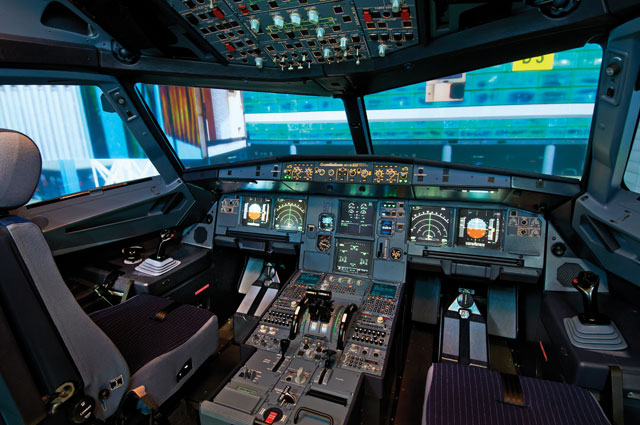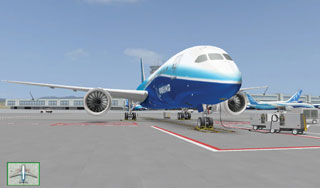While simulators have become ever more central to pilot training, the technology only recently found its way into technical training. But with growing computerisation of aircraft systems and shorter maintenance downtime, virtual reality is becoming more important in equipping engineers with new skills.
Part of the delay has been lack of investment in suitable technologies and unavailability of desktop computers with sufficient processing power. However, the main drivers have been aircraft technology development - particularly the use of automatic system health monitoring and software-controlled components - as well as growing cost and time pressures in the maintenance, repair and overhaul (MRO) arena. The challenge is not to maintain mechanical components, which will always be part of the technician's skillset, says Michele Asmar, director training solutions at CAE, but to interpret fault messages from the systems' built-in testing equipment correctly and find appropriate solutions. The tasks have become more software-orientated and, hence, lend themselves to computer-based training.
 |
|---|
L-3 Communications Simulator training is likely to grow as part of the mandated training and exam syllabus |
Full-fidelity maintenance simulations use the same programming as full-flight simulators and represent how an aircraft's systems work - and interact. Disabling, for example, electrical functions might lead to secondary or tertiary effects on ancillary equipment such as hydraulics. This is combined with a virtual model of the aircraft. Trainees go through line-orientated scenarios where they might analyse fault messages on the flightdeck, access necessary documentation, replace components and check whether their corrective actions solved the initial issue. The simulation provides virtual hands-on experience. "We find students are much [more] prepared when they come on the line due to their exposure to the operational view of the aircraft," says Asmar.
This reflects a shift from knowledge- to competency-based training in recent years, where trainees focus more on how to handle a maintenance situation rather than only acquiring theoretical background. "You don't need to know everything, but you need to know how to use your toolset," says Asmar.
 |
|---|
L-3 Communications Better software helps keep L-3 current |
CAE and L-3 both expect simulator-use to grow, depending on the extent simulator hours can be credited as part of the mandated training and exam syllabus. White says the UK civil aviation authority is reviewing whether to adjust the balance toward simulated training. In the military arena, 3D goggles and electronic gloves are already in use. Asmar is sure such devices will also be employed in technical training in the future but the costs are still too high for widespread use in the commercial aviation sector.
White agrees: "The problem is - and always will be - the time between getting the technology and getting an accredited training programme for the technology."
Source: Flight International
















